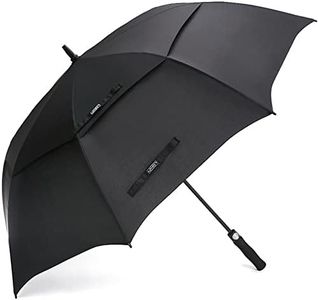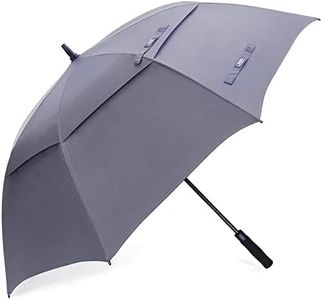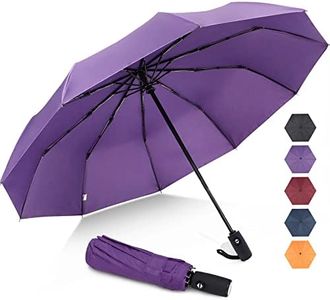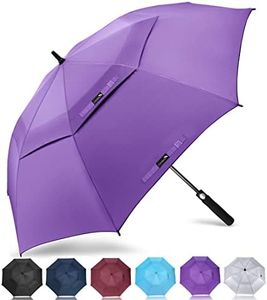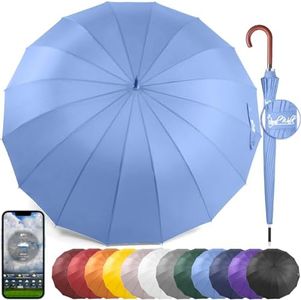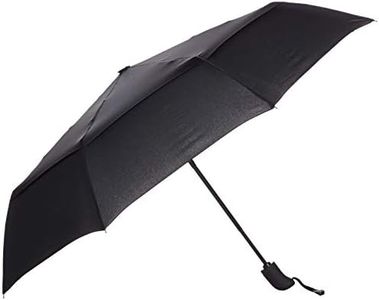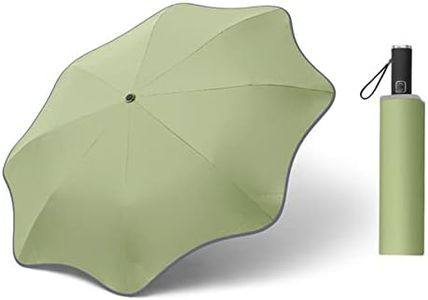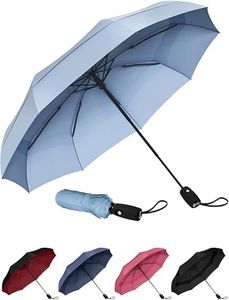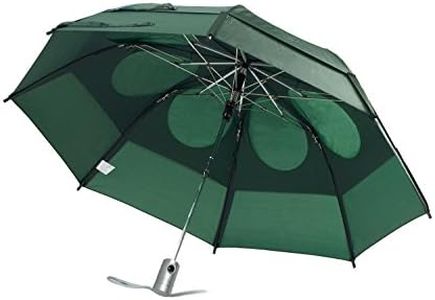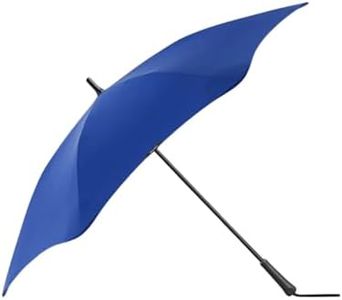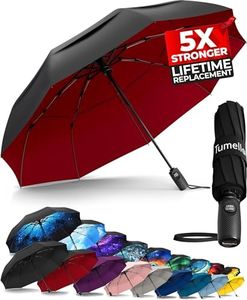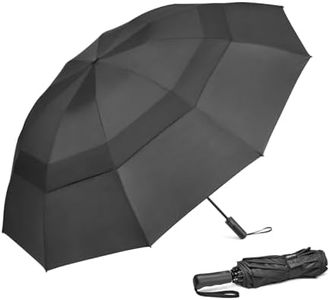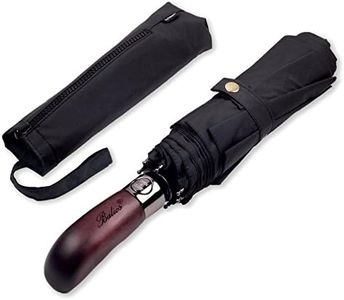We Use CookiesWe use cookies to enhance the security, performance,
functionality and for analytical and promotional activities. By continuing to browse this site you
are agreeing to our privacy policy
10 Best Windproof Umbrellas
From leading brands and best sellers available on the web.Buying Guide for the Best Windproof Umbrellas
Choosing a windproof umbrella is all about finding one that will protect you effectively in gusty conditions and last you through many rainy seasons. Not all umbrellas are made to handle strong winds, so looking carefully at the details can save you frustration and keep you dry when the weather gets rough. As you compare different umbrellas, focus on specific features that directly affect how well the umbrella will withstand wind, as well as how comfortable and easy it will be for you to carry and use.Frame Material and ConstructionThe frame is the skeleton of your umbrella, holding the canopy open and standing up to the wind. For windproof umbrellas, strong but flexible materials like fiberglass or high-quality steel are most effective, as they can bend under pressure instead of snapping. Generally, all-metal frames are heavier and may rust, while all-plastic frames are light but less durable. A good windproof umbrella will usually feature a combination of materials to balance strength and flexibility. If you often walk in stormy, high-wind areas, look for frames marked as reinforced or flexible, as they bounce back and won’t break easily in gusts.
Canopy Design (Vented or Double Canopy)The canopy is the part of the umbrella that shields you from rain and wind. Windproof umbrellas often have a double canopy or vented design, which means there are small vents or overlapping layers that allow wind to pass through instead of getting trapped and flipping the umbrella. Vented canopies are excellent in very windy climates as they prevent the umbrella from turning inside out. If you mostly face occasional breezes, a standard single canopy might work, but for frequent strong wind, go for a vented or double canopy design.
Rib Count and StrengthRibs are the thin supports that stretch the canopy out. Windproof umbrellas often have more ribs than regular ones, using 8, 10, or even 12 ribs instead of the usual 6-8. More ribs can distribute pressure more evenly, making the umbrella more resilient against gusts. However, too many ribs made from poor materials can still break, so strength is key—look for sturdy, flexible materials like fiber-reinforced plastic or fiberglass. If you need an umbrella for strong, unpredictable winds, a higher rib count made from strong materials is better.
Size and WeightA larger umbrella can offer better coverage but may be harder to carry and more difficult to manage in very strong winds. Compact windproof umbrellas are easier to carry in your bag but may provide less coverage for two people. If you need maximum protection and don't mind carrying something bigger, a larger windproof model may suit you. For everyday use and convenience, a medium-sized folding windproof umbrella is often the best balance.
Automatic vs. Manual OperationThis refers to how you open and close the umbrella. Automatic umbrellas pop open (and sometimes close) with the push of a button, which can be more convenient, especially if you’re in a hurry or have your hands full. Manual umbrellas require you to pull them open and closed. For windproof models, either mechanism can work, but automatic options are more common for daily use. If you value convenience or often need one-handed operation, choose automatic; if you prefer simple mechanics, manual is fine.
Grip and Handle ComfortA comfortable, non-slip handle is important for holding onto your umbrella in gusty weather. Rubberized or textured handles help you keep a firm grip, even when your hands are wet. Straight handles are easier to slip into bags, while curved (“crook”) handles may be more comfortable to carry for longer periods. If you walk long distances or have joint issues, pay extra attention to handle comfort.
